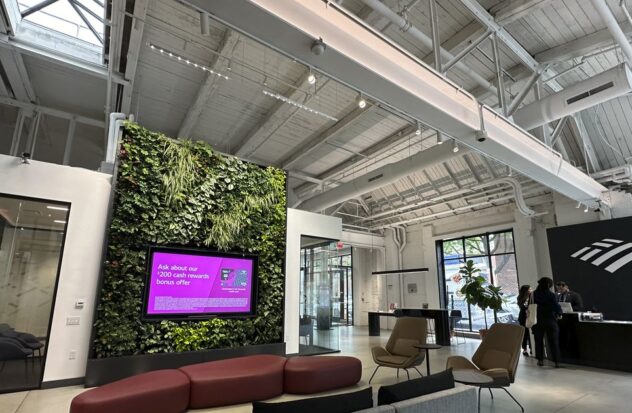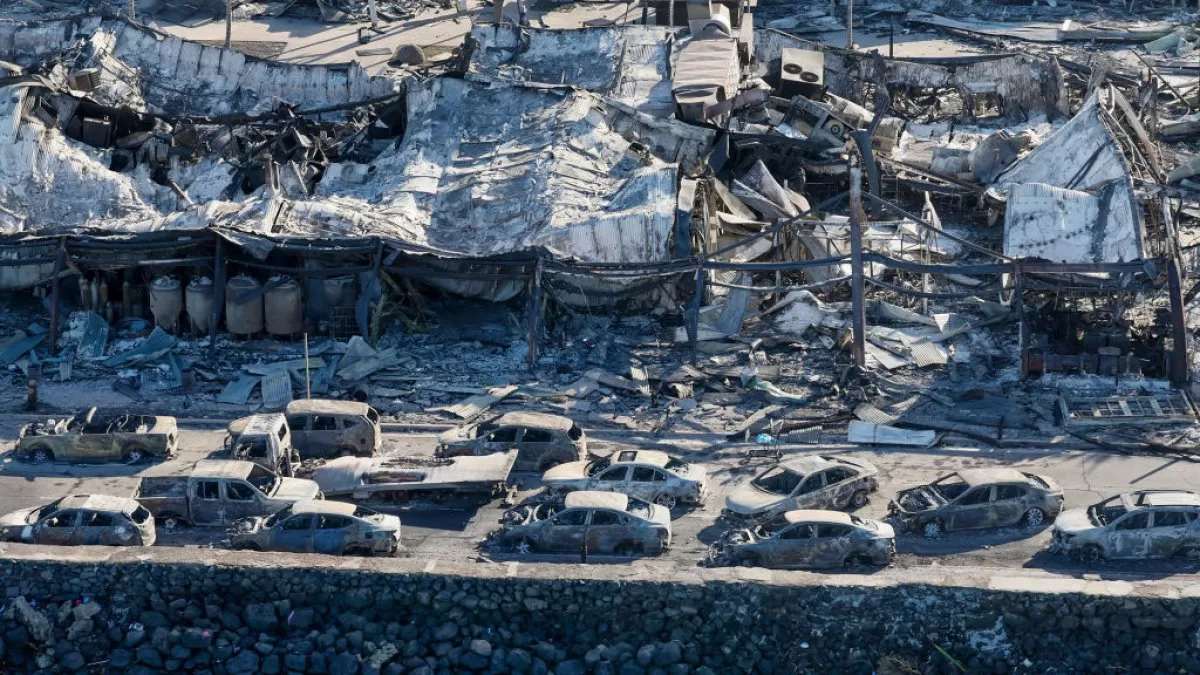NEW YORK — After years of closing or neglecting their U.S. branches, the nation’s largest banks are investing hundreds of millions of dollars in remodeling old locations or building new ones, and in the process changing the look, feel and purpose of the branch. local bank.
Many of these branches are larger, more spacious and designed to make clients feel more comfortable for meetings with specialists. Others are designed to allow nonprofit organizations or community representatives to conduct workshops or seminars for clients or neighbors.
They are a contrast to the marble-clad temples built 50 or 75 years ago and the generic, outdated branches that crowded suburban shopping centers.
“Walking into a branch can be intimidating. Now we are creating these spaces so that everyone feels welcome,” said Diedra Porché, head of community and business development for consumer banking at JPMorgan Chase & Co.
community centers
Porché leads a team of 150 employees who work in what JPMorgan now calls “community centers,” which are larger branches that have areas for nonprofits to make presentations to local residents and provide workshops for those seeking advice. . The last of these community centers opened in the Bronx in April, attended by local and state politicians from New York, as well as Jamie Dimon, chairman and CEO of JPMorgan.
JPMorgan is not alone in designing branches that focus less on sales and more on providing advice. Capital One opened its latest “café” in Union Square in May, a space that serves coffee and baked goods and allows anyone, whether a Capital One customer or not, to sit inside the cafe to work and network.
“Banking shouldn’t be that experience of someone sitting in a suit behind a desk talking about your loan application, but rather it should be someone sitting with you, offering to help you with those questions about money and finances,” said Jennifer Windbeck, manager of Capital One retail banking channels and operations.
Bank branches revive
Banks such as JPMorgan Chase, Bank of America and Wells Fargo had closed many branches since the 2008 financial crisis. They saw little need for their thousands of physical locations when fewer Americans regularly walked into a branch for routine banking needs and ATMs had largely replaced largely to the cashiers. In the remaining branches, customers often noticed worn carpets and well-worn office furniture and cubicles.
It seemed the bank branch’s fate was sealed when technological advances during the pandemic made it possible to buy a house or a car without physically interacting with another human being. The U.S. banking industry is estimated to have closed approximately 4,000 branches since 2020, according to the National Community Reinvestment Coalition.
Lawmakers and community advocates criticized the industry for closing so many branches after the financial crisis, especially those located in low-income neighborhoods where financial services were often limited to check cashing stores, pawn shops and loan stores until the payday.
“When bank branches close, there are several adverse effects on the surrounding community. Small business activity and lending in the area declines. More people are using alternative financial services which expose them to unregulated and predatory financial practices. “A major commercial tenant and employer is lost,” researchers wrote in a 2020 NCRC report on waves of bank branch closures.
Local bank branches are so important that even Congress got involved in the issue during the Civil Rights Era, passing the Community Reinvestment Act, a law partially designed to ensure that banks had branches in poor neighborhoods in the same way they in rich neighborhoods.
The trend of branch closures may be reversing, or at least slowing.
Chase is adding net new branches, while Bank of America has significantly reduced the rate of closures. Other big banks like Capital One and Wells Fargo are also slowly adding branches. Banks are finding new uses for their branches, often in unexpected ways.
Other banks join the trend
Despite the expansion of digital banking, bankers and community groups still emphasize that physical branches are a necessity. Industry and independent research has shown that Americans still want to walk into a branch when it comes to big financial issues like buying a home or car, preparing for retirement, dealing with the financial impacts of marriage or divorce, or having a son.
Some banks are even building new branches in locations that at first glance don’t seem inclined to be a bank.
Bank of America, for example, brought in Rebekah Sigfrids from Sephora and Victoria’s Secret as its first in-house branch designer instead of using traditional outside contractors.
An example of Sigfrids’ work is a Bank of America branch opened in Williamsburg, Brooklyn, which was previously used as a studio for a sculptor. The clean, spacious branch features sculptures by the artist that were previously in the space, as well as additional art from the neighborhood.
“Now we’re really thinking ‘how do we fit this branch into the community?’ Bank of America had its own style and feel, but what happens when we enter Williamsburg? What if you’re in downtown Manhattan, or Seattle, or what if you’re in Texas?”
JPMorgan Chase has opened nearly 20 of what it now calls “community centers.” These are larger branches located in low- and moderate-income neighborhoods designed to provide more comprehensive services to typically lower-income customers.
Chase builds these centers with multipurpose areas to allow nonprofit organizations or Chase employees to conduct financial education workshops or seminars for the community. Chase employees are specifically instructed not to discuss Chase products as part of these workshops, to provide higher levels of trust, Porché said.
“We wanted to combine all the traditional needs in one branch but expand that space so that customers can also get financial workshops and programming. These (new branches) should be an anchor for the community,” she said.
Source: AP.





